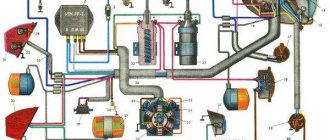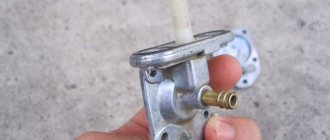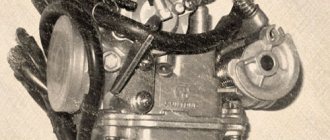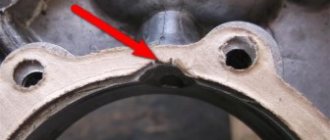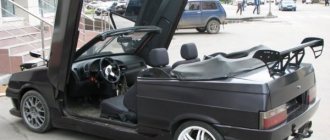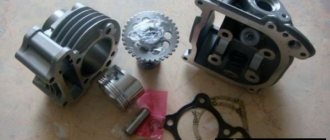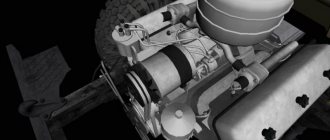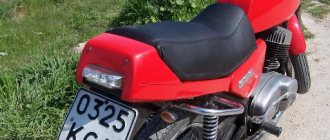It's no secret that the usual procedure for starting a car is being replaced by new, more advanced methods. This trend is observed everywhere and, according to many leading auto analysts, will soon find its application in all modern cars. As you may have guessed, this article will focus on the so-called “start-stop” option.
It is worth noting that at the moment such modification is found only on a limited number of cars of foreign brands, and there is no need to talk about the domestic automobile industry. Nevertheless, anyone can equip their car with such a device at any specialized car service center.
On the other hand, you can install the presented equipment yourself, without involving outside help, by adopting some rules and recommendations. Let's try to cover them in detail in this article.
Classic modernization methods
Since the ignition key in the usual sense is becoming a relic of the past, folk craftsmen are trying to correct the situation on their own. And as it turned out, modern Kulibins have already managed to invent several methods for such re-equipment, requiring a minimum amount of time, effort and financial costs.
The simplest of them is to install a start button along with a key, that is, we are talking about a partial modernization.
The operating diagram of such a device involves initially inserting the key, turning it and then starting it directly through the button itself.
The engine will have to be turned off in the same way, only in the reverse order, which ultimately calls into question the feasibility of such a decision.
As for the diagram, it looks like this:
The second scheme allows you to do without a key, which is why it is in great demand, but requires certain skills and effort.
The costs will also be impressive, since the car owner will have to fork out for a special relay and button illumination, powering it from the battery or vehicle alarm.
However, activation of one device will inevitably lead to deactivation of another. You will also have to abandon the steering wheel lock, which will not have the best impact on safety. In this case, the diagram of such a starting device will look like this:
There is another option for arranging the “Start-Stop” button in a car, however, it is practically no different from the second one. The only difference will be that when the button is pressed, the relay will start, and not the starter, as in the second circuit.
This is interesting: Do-it-yourself soundproofing of the engine compartment and engine
Connection diagram for a starter with a 220 V coil
In any magnetic starter connection diagram there are two circuits. One power line through which power is supplied. The second is a signal one. This circuit controls the operation of the device. They need to be considered separately - it’s easier to understand the logic.
At the top of the magnetic starter housing there are contacts to which the power for this device is connected. The usual designation is A1 and A2. If the coil is 220 V, 220 V is supplied here. It makes no difference where to connect “zero” and “phase”. But more often the “phase” is supplied to A2, since here this output is usually duplicated in the lower part of the case and quite often it is more convenient to connect here.
Connecting power to the magnetic starter
Below on the case there are several contacts labeled L1, L2, L3. The power supply for the load is connected here
Its type is not important (constant or alternating), it is important that the rating is not higher than 220 V. Thus, through a starter with a 220 V coil, you can supply voltage from a battery, wind generator, etc.
It is removed from contacts T1, T2, T3.
Purpose of magnetic starter sockets
The simplest scheme
If you connect a power cord (control circuit) to pins A1 - A2, apply 12 V voltage from the battery to L1 and L3, and lighting devices (power circuit) to pins T1 and T3, we get a lighting circuit operating on 12 V. This is only one of the options for using a magnetic starter.
But more often, these devices are used to supply power to electric motors. In this case, 220 V is also connected to L1 and L3 (and the same 220 V is removed from T1 and T3).
The simplest diagram for connecting a magnetic starter - without buttons
The disadvantage of this scheme is obvious: to turn the power off and on, you will have to manipulate the plug - remove/insert it into the socket. The situation can be improved if you install an automatic machine in front of the starter and turn on/off the power supply to the control circuit with its help. The second option is to add buttons to the control circuit - Start and Stop.
Diagram with “Start” and “Stop” buttons
When connected via buttons, only the control circuit changes. The strength remains unchanged. The entire connection diagram of the magnetic starter changes slightly.
The buttons can be in a separate case, or in one. In the second version, the device is called a “push-button post”. Each button has two inputs and two outputs. The “start” button has normally open contacts (power is supplied when it is pressed), the “stop” button has normally closed contacts (the circuit breaks when pressed).
Connection diagram of a magnetic starter with “start” and “stop” buttons
Buttons are built in front of the magnetic starter in series. First - “start”, then - “stop”. Obviously, with such a connection scheme for a magnetic starter, the load will only work while the “start” button is held down. As soon as she is released, the food will disappear. Actually, in this version the “stop” button is superfluous. This is not the mode that is required in most cases. It is necessary that after releasing the start button, power continues to flow until the circuit is broken by pressing the stop button.
Connection diagram of a magnetic starter with a self-recharging circuit - after closing the contact shunting the “Start” button, the coil becomes self-feeding
This operating algorithm is implemented using auxiliary contacts of the starter NO13 and NO14. They are connected in parallel with the start button. In this case, everything works as it should: after releasing the “start” button, power flows through the auxiliary contacts. Stop the load operation by pressing “stop”, the circuit returns to the operating state.
What are the pros and cons of installing it in a car?
What are the benefits of using a button?
- A light press is enough to start the engine.
- You no longer need to carry the ignition key with you.
- The button can be installed anywhere, including right at hand, which increases ease of use.
- A number of options are combined with car alarms, immobilizers and other security systems.
- You can lock the car by simply pressing a button on the door, without having to set it to the alarm - this saves time if you leave the car for a short time.
If you do not have basic electrical skills, it is better to seek services from a service station
Are there any disadvantages? Alas, yes.
- To start the car, you need to sit in it and press the brake pedal. Out of habit, many drivers forget about this.
- There may be difficulties when installing an alarm with heating. So, you will need at least two keychains - one of them must be given to the masters. They will disassemble it, take out the chip and install it in the car. Power will only be supplied at startup.
- Installing an alarm on a car with a button usually costs more.
There is an opinion that if the battery in the key fob runs out, the car will not be able to be started with the button, but this is not so. Just bring the product to the button and everything will work. If the battery runs out, you can open the car with the key.
Combined modification option
As practice shows, a combined conversion scheme can be implemented even by a novice motorist who is at least a little familiar with the electrical structure of his vehicle. To do this you will need to acquire the following components:
- ZPTF relay;
- 4-pin relay;
- 5-pin relay;
- engine start and stop button;
- diodes and terminals.
Having prepared everything you need, including tools (nippers, pliers, insulating tape), you should connect the contacts according to the diagram with further installation of the diode, which can be installed almost anywhere.
Ready-made universal kits
If you wish, you can purchase a ready-made kit for such a modification. Among all the abundance presented, the following universal options are distinguished:
- Sets with key and start button. The system turns on the engine only after turning the key in the ignition switch.
- A keyless option with a more complex installation scheme.
- A push-button starting device with a short press, which starts the engine literally in a second of holding, which will be quite enough to fully crank the starter.
- A long-press device that requires more time to turn on the internal combustion engine, allowing the driver to control the rotation of the starter himself.
If any difficulties arise with the installation of any of these kits, you can always solve the problem with the help of specialists.
How does the start stop button work?
First of all, “a little history.” Car enthusiasts have mastered installing a button to start the engine themselves quite a long time ago. On a car with a relatively simple electrical circuit, this is not a problem. For example, let's take the VAZ 2108-09.
Installing a start-stop button with your own hands on a car with a relatively simple electrical circuit is not a problem.
On the body panel separating the engine compartment and the interior (popularly called the “chest”), next to the switch, there is a starter activation relay. Many car enthusiasts have encountered a situation where a burnt-out relay coil could be replaced with a finger - just press the contacts, removing the relay cover, with the ignition on. In the same way, you can “ignore” the operation of the ignition switch when turning the key to start. It is enough to “break” the wire coming from the lock to the relay and connect a button with normally open contacts into the break. But such a button can only carry out a start - it will not be possible to turn off the engine with its help. In addition, you still have to turn on the ignition with the key.
How the Start/Stop button works
Before starting all the work, it is important to understand the fundamental features of the device and understand the intricacies of its operation.
Without going into details, the procedure for activating this system itself consists of sequentially performing the following steps:
- disabling the alarm;
- pressing the brake pedal;
- pressing the treasured button.
The last action involves briefly starting the car starter. In order to turn off the car, you should press the same brake pedal all the way and press the magic button.
Execution of the presented algorithm will lead to the desired result only if a number of certain conditions related to the installation of working units and elements are met.
Such a superficial analysis of the system’s operation, however, does not give the car enthusiast a clear idea of its functional features. For a more thorough acquaintance with the operating features of the device, it would be advisable to study the circuit diagram of its connection, which is attached below.
Pros and cons of the device in the car
According to established tradition, let’s try to find out what positive and negative aspects are hidden in installing a “start-stop” button.
Let's start, perhaps, with the positives. If you believe numerous reviews, there are much more of them than there are minuses.
So, the presence of the presented system allows:
- simplify the engine starting procedure;
- increase comfort;
- improve the car's anti-theft system;
- save time.
If we talk about the negative phenomena associated with the installation of such a device, it is worth noting that they are all rather indirect in nature.
For example, in this case the driver has to get used to an unusual algorithm of actions for a long time. Some difficulties may also arise if the car has an autostart system.
In this case, in order to eliminate the possibility of malfunctions in the operation of the presented device, it becomes necessary to carry out work to reinstall the working module of the key fob. This will require the intervention of specialists and, as a result, unnecessary expenses.
This is interesting: How to install a flame arrester instead of a catalyst with your own hands - the pros and cons of replacement + detailed guide
Standard delivery set
The delivery set of the universal device for equipping a vehicle with an engine start/stop button consists of:
- control module;
- the “Start/Stop” button itself;
- built-in immobilizer scanner;
- 2 keychains;
- installation wires;
- instruction manuals (with connection diagram).
This kit is designed for installation on almost all models of both domestic and imported cars. The current price (depending on the manufacturer) is 1500÷4500 rubles.
For information! To deactivate the immobilizer, simply bring the key fob close to the scanner at a distance of 2÷5 cm. After this, a sound signal will sound, informing you that the device is ready for operation. 15÷20 seconds after stopping the engine, the control module automatically switches the device into security mode.
Steering wheel unlock options
When we remove the key from the lock, the steering wheel is locked, that is, fixed with a spring-loaded metal pin. In order to operate the car normally after installing the “Start/Stop” button, it is necessary to remove this function. There are two ways to do this.
The first, and from our point of view, the most preferable method:
- order a duplicate ignition key;
- insert it into the lock and make a mark at a level of 1÷1.5 mm above the surface level;
- take out the key and saw off the “excess” in accordance with the mark;
- insert the “piece” into the lock and use pliers to turn it to position 2 (now the steering wheel is unlocked);
- We leave a piece of the key in the lock until the need arises to return to the standard ignition circuit.
The second way to get rid of the steering wheel lock is to completely remove the ignition switch. In the resulting hole we either mount the “Start/Stop” button or install a plastic plug of a suitable size. The main disadvantage of this method is that it will no longer be possible to quickly “return” to the standard circuit of turning the car engine on/off using a key.
Car safety issue
Drivers often like this system, but they are in no hurry to install it, worrying about protecting the car from theft. In fact, in this regard, everything is thought out - you will not be able to start the engine without the key fob.
The Start-Stop Engine button is a rather interesting function, which is most often implemented by tuning enthusiasts in their cars.
In the top trim levels of modern cars, instead of the traditional ignition switch, you can increasingly see a large round Start Engine button. To start and stop the engine of this car, you don’t need a key—you just need to press the button once.
How to bypass the standard immobilizer
Many modern car models are equipped with an anti-theft device such as an immobilizer. Manufacturers equip the vehicle with a similar standard device already at the factory. The reading device is usually installed in the ignition switch, and the control mark in the key. If the security guard is not dismantled, then a key will be needed to deactivate the security mode. If you decide to remove the lock, then you need to disassemble it, find the immobilizer reader and move it to a suitable location. However, in order to start the engine with the Start/Stop button, you will still have to have the key with you.
For information! Some manufacturers, in addition to the universal “Star/Stop” kits, produce special devices for temporarily disabling (bypassing) the standard immobilizer.
DIY option
The Internet is replete with diagrams for making your own ignition control units using the Start/Stop button. For those who like to do car tuning with their own hands, below is one of the fairly simple options that is easy to repeat:
To make this device yourself you will need:
- 4 relays: PTF 21.3777 (300 rubles), 231.3787 (150 rubles), 90.3747-10 (2 pieces for 75 rubles);
- 4 diodes (for example, 4007 - 4 rubles per piece);
- button without fixation (30÷70 rubles);
- installation wires of suitable diameter;
- crimp terminal blocks (“female” - for switching relays among themselves, “male” - for connecting the manufactured unit to the ignition switch block).
The operating algorithm of the circuit is completely similar to the engine start/stop device of ready-made universal kits. Naturally, the homemade device does not have an additional anti-theft function (immobilizer). Otherwise, the scheme is quite workable and has been tested by many car enthusiasts.
Start/stop the car engine using a button
Today, many modern cars are equipped with a push-button engine start/stop control module. Having become interested in this topic, I developed a control unit for turning on/off the operating modes of the vehicle's electrical equipment and starting the engine, using an additionally installed button and a standard brake pedal. The device can be installed in cars either as an additional module to the existing ignition switch (taking into account the neutralization of the steering column lock), or as a replacement for it. The device can use buttons sold in online stores that are structurally designed for the function of starting/stopping a car engine, as well as any button suitable for this purpose, which can be installed in any convenient place, including for security purposes and discreetly.
When developing the operating algorithm of the device, in order to create maximum convenience for controlling the engine start/stop using a button, the author tried to take into account all possible situations that may arise when operating the car.
The determining factor for performing a particular procedure is compliance with the combination of long (more than 2 s) or short (less than 2 s) button presses, depending on the position of the brake pedal (pressed or released). All possible options are summarized in the table.
Installation methods
Nobody significantly limits car owners from installing a button on their car to start the engine with a simple press.
Therefore, more and more often you can meet those who want to install a solution:
- for 140 Mercedes;
- Niva;
- Lada Granta;
- Hyundai Solaris;
- to Priora;
- Honda cars;
- Mitsubishi ACX;
- Mitsubishi Lancer;
- Audi 100 C4;
- Toyota Yaris;
- Kia Rio;
- and even VAZ 2114.
The main thing here is to decide whether you really need this button. If yes, then move on to choosing the system itself.
Modern manufacturers of universal buttons allow you to select a mechanism for any machine. Please note that there are various connection schemes. Each of them has its own characteristics.
But a few of the most popular solutions dominate. These are the options that car owners prefer. Let me introduce you to them:
Initial and final stage
Both are the same when connecting a button with different specified parameters. In any case, you will have to cut out a “window” on the dashboard where the start button itself will be built in. By the way, some people prefer to install it on the console near the gear shift knob, below. But the most popular place is still the torpedo.
There are a million options for the tools used in this: our inventive people don’t bother too much with finding special equipment. We used a soldering iron, a utility knife, and a drill, which is used to make holes around the circumference, after which the holes are bored into a circle with a jigsaw file...
Those who wish can come up with their own know-how, use those proposed, or rent the “correct” tools. Gaining access to the wires does not require clarification: according to the diagram from your model, the console and/or the so-called “beard” are disassembled.
The final touch will be to install a plug on the now unnecessary ignition switch. The plug comes complete with the system; It doesn’t require instructions for use: just put it on the spring feet and that’s it.
Do-it-yourself high-pressure washing: fiction or reality
- Button with ignition key. This system will not allow you to start the car without using the ignition key. Therefore, you need to turn the key itself in the lock, and then press the button;
- Keyless. To start the motor, you just need to press the button. An extremely convenient scheme. But here it is important to install it correctly, otherwise the car will be extremely easy to steal;
- Short press. To start, hold the button for up to 2 seconds. The starter rotates and turns off when the engine is running;
- Long press. Allows you to hold a key as long as required. The starter will not stop rotating until the engine starts;
- A circuit where the ignition is activated after a key has been pressed;
- A scheme in which the ignition is activated 1 second earlier than the car starter.
Also, some combine different schemes to achieve the desired result.
If you do not have experience in such work, and also have poor understanding of automotive electrical equipment, you should not take on such work with your own hands.
Contact good workshops. Moscow alone is ready to offer dozens of addresses of car services that offer similar services. The price will be higher, but the result is guaranteed.
How to choose the right button to install instead of the ignition switch
As you can understand, the launcher button works when it is pressed for a certain time. During this period, the starter rotates the crankshaft and the engine starts, after which the button is released. When choosing a part, you need to take into account a number of features. First of all, attention should be paid to fixing the button. It is best when the contacts close when pressed and open when released. If you install a latching button, then in order to open the contacts after starting the engine, you will need to quickly press it again, which is not very convenient.
Advantages and disadvantages of the device
First, we list the advantages of the “start/stop” mechanism:
- The driver no longer needs to use the ignition key every time he needs to start the engine. All it takes is a simple click;
- you can mount the “start/stop” anywhere. This means the car will become a little more comfortable;
- there are special schemes in which the start/stop button is connected to the immobilizer or alarm system, which is an additional security measure that prevents car theft;
The start/stop button can be linked to your car's alarm or immobilizer
- If the driver leaves the car for a short time, he can lock the car by simply pressing a button on the door. In such situations, there is no particular need to set the car alarm, therefore, there is a slight saving of time.
But there were some downsides too:
- To start the engine, the driver must sit in the car and press the brakes. Getting used to this feature of starting the engine can be difficult, especially for novice car enthusiasts;
- if the driver decides to install an alarm with an auto-start function on a car with a button (to warm up the car in winter, for example), then problems may arise with this, which, fortunately, can be solved. The driver will just need to have a couple of key fobs with him. One of them will have to be given to alarm installers so that they can disassemble it, take out the microcircuit and put it in the car. After this, the current will be supplied only at the moment the engine starts. But for all this, the car owner will have to seriously pay extra to the craftsmen;
- If a button is already installed on the car, but there is no alarm yet, then installing it will cost the driver more, sometimes twice as much.
Tips and tricks
The engine start button works in such a way that the driver presses it and holds it for the required time to start. During this period of time, the starter rotates the crankshaft, resulting in the engine starting. Then the button can be released.
Note that when choosing a “start-stop” engine start button, a number of certain nuances should be taken into account. One of these points is the issue of fixing this button. The optimal option is when, after pressing, the contacts are closed, and when released, they open. If the button has a lock, then after starting the engine, you will need to quickly press it again to open the contacts.
For these reasons, it is worth considering when choosing:
- a strong current will be supplied to the button;
- the solution will be constantly used;
Taking into account these operating features, it is better to choose an engine start button with a high-quality external coating (for example, chrome plating). Such a product will have abrasion resistance to maintain an acceptable appearance
You also need to understand that cheap offers can burn out after just a few clicks, so this aspect should be given special attention
Why the starter may not work after turning the key in the ignition. The main causes of starter malfunctions: bendix, traction relay, brushes, winding.
Remote engine start unit: basic functions. Safety of using the internal combustion engine autostart module, interaction with car alarms and immo.
How to remove the engine start lock. Checking for random activation of the immobilizer and how to disable it. Diagnosis of possible alarm malfunctions.
How to determine why the fuel pump does not pump or works poorly. Fuel rail pressure, pump diagnostics. Wiring, relays, fuel pump fuses.
Reasons for difficulty shifting gears with the engine running. Transmission oil and level in the gearbox, wear of synchronizers and gearbox gears, clutch.
Problems with the Hydronic heater: the heater does not start, after starting operation the device turns off, smokes, makes noise, restarts, etc. Diagnostics.
Source
Installation recommendations
Before starting work, you should take preparatory measures. A lot depends on what kind of machine you are dealing with. Some people remove the car ignition switch itself by installing a simple key in its place. In other situations, a hole is made to size, allowing access to the wiring and allowing connection to the electrical circuit.
To work you will need a set of tools and some materials, consisting of:
- screwdriver;
- wire cutter;
- electrical tape;
- ready button;
- three four-pin relays;
- one five-pin relay;
- one relay from PTF;
- a set of insulated wiring with terminals;
- free time;
- installation instructions.
If you buy a ready-made kit, then you are doing absolutely right. The package includes everything you need, plus a detailed installation manual and the installation diagram itself. It is from this instruction that you need to build on, and not look for some universal guides.
For those who understand the electrical equipment of cars, the diagram below will be a clear example. This is the simplest algorithm that allows you to set keys to start the power plant by simply pressing a button.
If this picture doesn’t tell you anything at all, then taking on such a task is strictly prohibited.
The bottom line is to make three connection points in your car. The first will be located on the ignition block of your car, the second will be placed on the brake pedal limit switch, and the third will be placed on the control wire.
Whether to install such a solution or not, everyone decides for himself. Carefully consider the advisability of changing the engine switching principle on your car. Experience shows that the button is not suitable for everyone. That’s why many people change back Start-Stop to the usual key turned in the ignition switch.
Subscribe to updates and receive articles by email!
We guarantee: no spam, only new articles once a week!
System implementation options
There are two options for assembling and installing the start-stop system.
The first method is the most economical. To assemble it, you will need the non-latching button itself, two four-pin relays with blocks, one six-pin relay for rear fog lights, two diodes and additional wires with terminals. The assembly diagram is shown in the figure
Installation and assembly does not cause any problems; it is only important when connecting to use fairly thick wires, the same as those that fit the lock. But this circuit is the simplest, without protection or blocking. In addition, with such a scheme, anyone who gets inside will be able to start the car.
The next option is more complex
It uses four relays and adds a limit switch that locks the system when the clutch is engaged. This addition greatly increases security against false alarms and accidental button presses by passengers or other unauthorized persons. The operation scheme in both cases is quite simple: with the first long press the engine starts, with the second long press it stalls. The ignition is still turned on with the key.
The third option is to use an installation kit. It includes a non-latching button, a control unit and all the necessary wires. The button is installed instead of the ignition lock cylinder and has the same dimensions. You can leave it in order to keep the steering wheel locked with the key. Another option is to leave the sawed-off key turned in the lock so that it does not block the steering wheel.
The button itself and the control unit are connected instead of the lock and implement all its functions. The connection diagram is designed in such a way that, if necessary, you can return to the original factory version.
The control of the start-stop system is as follows:
- One click - everything is turned off;
- Second click – turn on the ignition;
- Third click – turn off the ignition;
- Holding the button in combination with the brake or clutch pedal is pressed - turning on the starter and starting the engine.
When the engine is running, the ignition is turned off by pressing the clutch or brake pedal once with the clutch or brake pedal depressed.
This is done to prevent false or accidental positives. If the car is equipped with an automatic transmission, then locking it using the brake pedal is the only (and most correct!) solution.
In addition, on such cars and when switching the automatic transmission selector, you will need to press the brake. On cars with a manual transmission, it is better to use the clutch pedal as a lock, since in situations where the engine suddenly stalls while driving, you will have to press the brake to start, and this can be fraught.
Problems with keyless car starting system
As noted earlier, the use of such a system is associated with a number of problems. Most of them cause inconvenience only in the absence of certain skills in using the presented system.
This may include:
- the need to manipulate the brake pedal;
- inconsistent operation of the system in the presence of the “autostart” function.
How to unlock the steering wheel
Another important problem that motorists who have equipped their cars with such a system often face is unlocking the steering wheel. Of course, as a last resort, you can resort to a barbaric method and get rid of the blockage using simple manipulations with a mounting tool and other tools.
You can solve this problem as follows:
- The first option involves making a duplicate of the ignition key, sawing off the top part, inserting the piece into the lock and turning the key to position 2, which means the steering wheel is unlocked.
- The second method involves completely dismantling the ignition switch; by the way, the start-stop button itself can be mounted in the resulting hole.
But it’s still much easier to use the services of professionals. The fact is that it is not always possible to unlock the steering wheel yourself, due to the characteristics of a particular car. Therefore, in this case, it is best to contact specialists.
Installation of the start button and its features
Features of replacing the ignition switch in a Chevrolet Niva: how to change it yourself
Before we start talking about mounting the entire system, it is worth noting that there are two main paths you can take: purchase a ready-made kit and install it, or assemble everything yourself.
You can install the system in two ways - either the car will only have a VAZ 2114 start stop button, or the original ignition with a key will also remain. The first option is much preferable and simpler - the ignition switch is simply removed and the start button is inserted in its place. How to properly connect it to the electronic system is indicated in the instructions supplied with it.
It is for this reason that it is impossible to give any precise recommendations on connection. For each start button it is individual (some of them may have a connection to the alarm system and other electronic systems, and some may not). Therefore, the most important advice is to strictly follow the attached instructions.
Start stop button
The newly installed system operates in the following order:
- The first press of the button turns on the power without starting the engine;
- second press - turn on the ignition;
- third - turn off the ignition;
- the first press while simultaneously pressing the brake pedal starts the engine.

